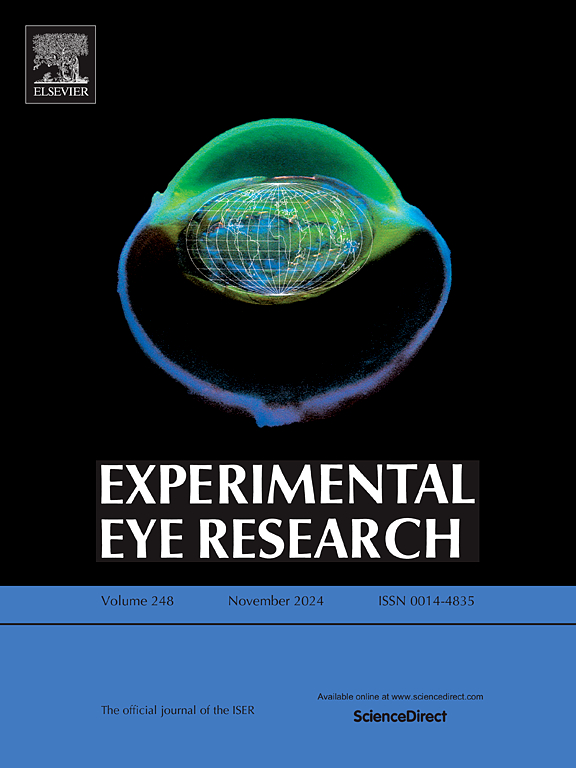Depletion of Polypyrimidine tract binding protein 1 (ptbp1) activates Müller glia-derived proliferation during zebrafish retina regeneration via modulation of the senescence secretome
IF 3
2区 医学
Q1 OPHTHALMOLOGY
引用次数: 0
Abstract
Polypyrimidine Tract Binding protein 1 (PTB) is an alternative splicing factor linked to neuronal induction and maturation. Previously, knockdown experiments supported a model in which PTB can function as a potent reprogramming factor, able to elicit direct glia-to-neuron conversion in vivo, in both the brain and retina. However, later lineage tracing and genetic knockouts of PTB did not support direct neuronal reprogramming. Nevertheless, consistent with the PTB depletion experiments, we show that antisense knockdown of PTB (ptbp1a) in the zebrafish retina can activate Müller glia-derived proliferation and that depletion of PTB can further enhance proliferation when combined with acute NMDA damage. The effects of PTB are consistent with a role in controlling key senescence and pro-inflammatory genes that are part of the senescence secretome that initiates retina regeneration.
在斑马鱼视网膜再生过程中,聚嘧啶束结合蛋白1 (ptbp1)的缺失通过调节衰老分泌组激活神经胶质细胞衍生的增殖
多嘧啶束结合蛋白1 (PTB)是一种与神经元诱导和成熟相关的剪接因子。此前,基因敲除实验支持一种模型,即PTB可以作为一种有效的重编程因子发挥作用,能够在大脑和视网膜中引发体内胶质细胞到神经元的直接转化。然而,后来的谱系追踪和PTB的基因敲除并不支持直接的神经元重编程。然而,与PTB耗尽实验一致,我们发现斑马鱼视网膜中PTB (ptbp1a)的反义敲低可以激活 ller胶质细胞来源的增殖,并且PTB的耗尽可以进一步增强增殖,当合并急性NMDA损伤时。PTB的作用与控制关键衰老和促炎基因的作用是一致的,这些基因是启动视网膜再生的衰老分泌组的一部分。
本文章由计算机程序翻译,如有差异,请以英文原文为准。
求助全文
约1分钟内获得全文
求助全文
来源期刊

Experimental eye research
医学-眼科学
CiteScore
6.80
自引率
5.90%
发文量
323
审稿时长
66 days
期刊介绍:
The primary goal of Experimental Eye Research is to publish original research papers on all aspects of experimental biology of the eye and ocular tissues that seek to define the mechanisms of normal function and/or disease. Studies of ocular tissues that encompass the disciplines of cell biology, developmental biology, genetics, molecular biology, physiology, biochemistry, biophysics, immunology or microbiology are most welcomed. Manuscripts that are purely clinical or in a surgical area of ophthalmology are not appropriate for submission to Experimental Eye Research and if received will be returned without review.
 求助内容:
求助内容: 应助结果提醒方式:
应助结果提醒方式:


